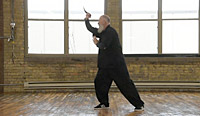Forms
Internal martial arts forms are practiced for health, self-defense, and meditation. Here you will find a list of empty hand, two-person, and weapons forms that Ming Tao teaches. Soon we will have a short video for each form.
Empty Hand
T'ai Chi Ch’uan
Yang Family Long Form
As taught by Master Liang Tung Tsai, the traditional performance of the sequence of postures and techniques which constitute the basis of the Yang Style of T’ai Chi is practiced for health, self-defense and meditation.
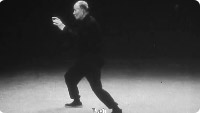
Medium Form
Created by Master Ray Hayward, this 72-posture form has influences from Master Ray’s two main T’ai Chi teachers: Liang Tung Tsai, and Choi Wai Lun. It emphasizes relaxation while preserving the martial aspect of the art.

Cheng Man Ch’ing Short Form
Created by Master Cheng Man Ch'ing, this form is composed of 37 unique postures. The Short Form is also practiced for health, self-defense and meditation and, as expected, takes less time to complete than the Long Form.
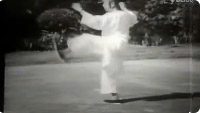
Fast Form
Also created by Master Ray Hayward, the form has 72-postures which are similar to the Medium Form. However, the movements are done in a highly energetic way and each posture flows into the next. It has more of a Martial quality to it and can be completed very quickly.
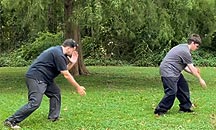
Tui Shou - Pushing Hands
A two-person practice where the practitioners work together to develop sensitivity and nine joint harmony. Push Hands practitioners train slowly and softly to develop energy and technique.

San Shou, or "The Dance"
San Shou is a two-person form using the moves from the Traditional Long Form. The Dance demonstrates and practices the martial arts and self-defense applications of each of the postures by using a variety of training techniques and methods.

Pa Kua Chang
8 Palm Changes
This form incorporates the circle-walking technique made popular by the art of Pa Kua. It uses circular coiling movements and continuouly changes in a smooth manner. The form is quite beautiful while still preserving the martial components.

Swimming Dragon
Unlike many other Pa Kua forms, the Swimming Dragon doesn’t walk the circle. Instead it uses more linear stepping while continuouly changing direction like a snake swiming in the water. It still uses coiling and circular body movements.

Hsing Yi Ch’uan
5 Element Linking Fist
Composed of the 5 Element Fists and a few of the 12 animals (Bear, Wild Cat, Crane) of Hsing Yi, the Linking Fist moves quickly with straight line power. and covers a lot of ground This form builds energy in the body very quickly.

5 Element Change Form
Using only the 5 Element Fists (Metal, Water, Wood, Fire, and Earth) in what is know as the "productive" cycle of the elements, the Change Form can be done slowly at the beginning, and gradually over time you can do it faster and with more energy.

Liu Ho Pa Fa Ch'uan
12 Animals of Liu Ho Pa Fa
The 12 Animals, possibly created from the Liu Ho Pa Fa Main Form by Grandmaster Chan Yik Yan, emphasize the instinctual feelings of the animals they emulate. And especially work on the 9-joint Harmony in the body.

Weapons
T'ai Chi Sword
In Chinese the word "Jian" means a double edged blade. The T'ai Chi Sword has it's roots in Wu Tang mountain sword work. It is a very Taoist art in that it emphasized small cuts to the opponents weapon hand and arm to stop them from continuing the attack instead of just maiming them.

T'ai Chi Saber
In Chinese the word "Dao" means a single edged blade and is often translated into english as "knife". This form shows what is called "Tiger Energy" and works the legs and waist to whip the saber around and into its target. It uses "Drag-Steps" to allow the practitioner to move with the blades momentum.
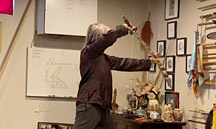
T'ai Chi Cane (or Short Club)
The Cane form was originally a Shaolin form and was used by police in China. It was adapted by Master Liang to use in his T'ai Chi system. So, in Master Liang's system, a student learned Cane, Sabre, and then Sword. From no blade, to one edge, to two edges.

T'ai Chi Fan
The Fan form we practice was created by Master Ray Hayward and given to Simu Diane Cannon to carry forward. It uses postures from the Sword, Saber, and Cane forms. Like the Sword, it is a very high level weapon and is usually learned later than other weapons.

T'ai Chi Spear
Considered by some to be the most advanced weapon, the spear works the back. The traditionally the spear came in 3 lengths: one that was as tall as the practitioner with a hand raised over head, double the length of the first one, and triple the length. The really long spear was known to be used by Hsing Yi practitioners to develop straight line power.

Double Sword
Thanks to Master Liang, we have so many weapons forms. He had multiple sword teachers and one of them taught him the martial use of the tassle. This form has very complex movements especially due to the two-edged nature of the sword and a long tassle on each weapon.

Double Saber
Adapted by Master Liang from a Shaolin form, he applied T'ai Chi principles to it. It has all the energy of the single saber form but with two blades moving together. It is a complex set of movements and is really fun to practice. Instead of tassles, the sabers have kerchiefs or "flags" attached to the pommel. The flags whip around and make a crisp snap by the use of the legs and waist.

Man Chiang Hung
Another well know traditional sword form, and comes from Shaolin origins. It is accompanied by an old war poem that is sung rather than just recited. The form follows the cadence of the poem which has a number of slow and fast parts. It is also a tassle form which uses the tassle as a weapon instead of just a decoration for the sword.
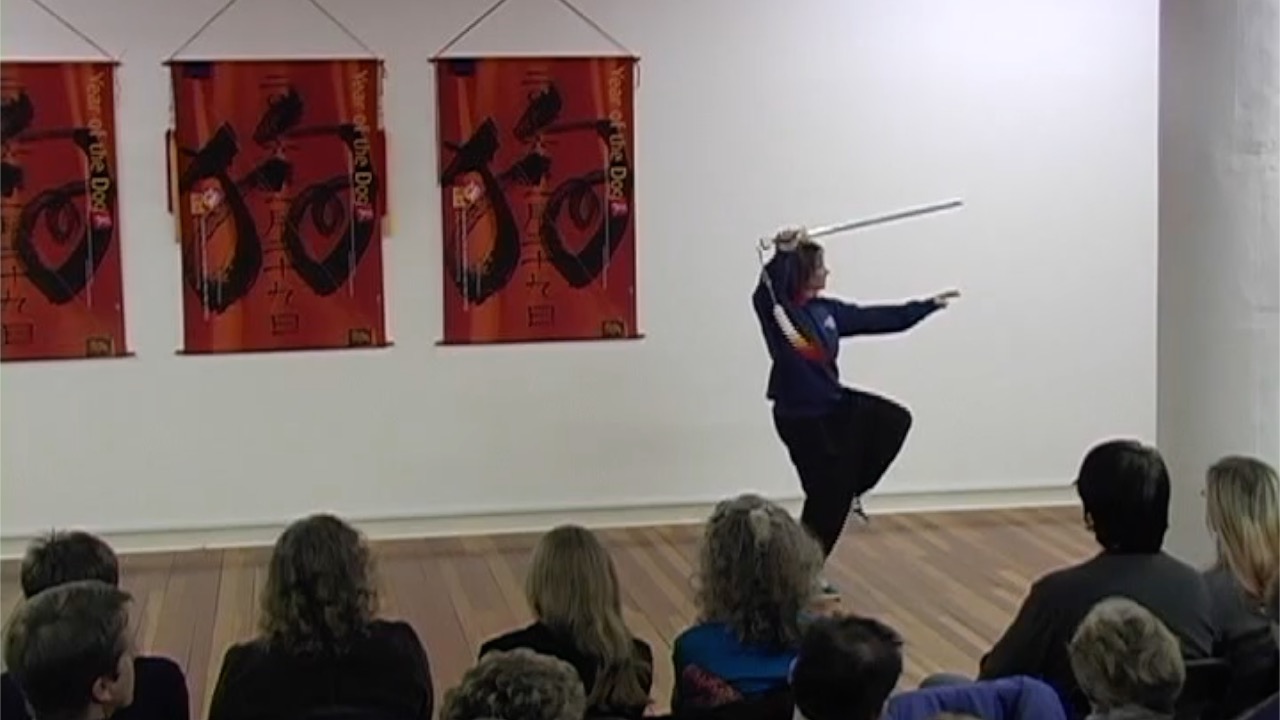
Karambit
The Karambit is not a Chinese martial arts weapon, but has its origin in Indonesia. It is an inward curved blade which is very often held in what is called a "reverse grip". It was a secret weapon used by women who wore it in their hair to hide it. It is also used in Philipino martial arts by masters such as Doug Marcaida.
